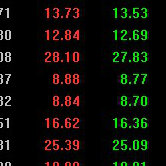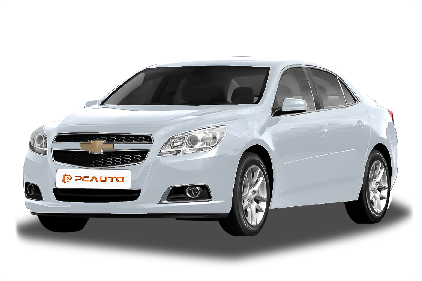Q
Is a 2014 Malibu a V6?
The 2014 Chevrolet Malibu didn't come with a V6 option in the Malaysian market. Instead, it was all about fuel efficiency with standard four-cylinder engines across the range. You could pick between a 2.5-liter naturally aspirated or a 2.0-liter turbocharged unit – a setup that mirrored the global shift towards smaller-displacement turbos in midsize sedans back then, and it made perfect sense for Malaysia's roads and pretty steep fuel prices. Sure, V6s are known for their buttery-smooth power delivery, but four-cylinder turbo tech had already gotten to the point where it balanced performance and fuel economy nicely. The 2.0T, for example, cranked out around 259 horsepower, which is more than enough for your daily drive. When shopping around in Malaysia, keep an eye on local spec differences – some imported models might still have that V6 under the hood, but you'll pay a premium in taxes for it. Mainstream brands were (and still are) pushing smaller turbos or hybrid systems here; they not only cut down on road tax but also align with the whole eco-friendly vibe. Before you sign on the dotted line, I'd definitely hit up Chevrolet Malaysia's official website to check exact specs or book a test drive to get a feel for how it actually performs on the road.
Special Disclaimer: This content is published by users and does not represent the views or position of PCauto.
Related Q&A
Q
How much is a 2014 Chevy Malibu transmission?
The cost of a transmission for a 2014 Chevrolet Malibu can vary pretty widely depending on a few key factors: what type of transmission it is (like the 6-speed automatic), whether it's brand-new, remanufactured, or used, and where you end up buying it—think dealership, third-party supplier, or even a junkyard for a used unit. Here in Malaysia, if you're looking at a brand-new OEM transmission, you're probably looking at a price tag between RM8,000 and RM15,000. If you go the remanufactured or used route, you might be able to bring that down to around RM4,000 to RM8,000. But remember, that price usually doesn't include the labor cost for installation, which can add another RM1,000 to RM2,500, plus any extra parts that might be needed along the way.
My advice? Head to a Chevrolet authorized service center or a reputable transmission specialist shop to get a solid, accurate quote—they’ll know exactly what you need. And don’t sleep on regular maintenance! Changing your transmission fluid every 60,000 to 80,000 kilometers can really help extend its life. If you start feeling rough shifts or delays when changing gears, get it checked out ASAP. Small issues can turn into big, expensive problems fast if you ignore them. Also, with Malaysia’s hot and humid weather, keeping an eye on your cooling system is crucial—transmissions hate overheating, so make sure that system’s in good shape to keep things running smoothly.
Q
How much does a used Malibu cost?
In Malaysia, the price of a used Chevrolet Malibu can vary quite a bit depending on factors like the car's age, mileage, condition, and specs. Generally, you're looking at a range of around RM60,000 to RM120,000. For example, models from 2016 to 2018 with 50,000 to 80,000 kilometers on the clock tend to go for about RM70,000 to RM90,000. The newer ones, from 2019 to 2021, might set you back over RM100,000. When buying a used car, it's a good idea to check the service records and accident history. Sticking with reputable used car dealers or certified platforms can also help protect your interests.
The Chevrolet Malibu, as a midsize sedan, has its fans thanks to its comfort and space. But here's the thing to note: American used cars in Malaysia can come with higher maintenance costs and parts might be a bit harder to source. So, it's smart to scope out the service situation at nearby repair shops beforehand. Also, Malaysia's used car loan policies usually let you borrow 70% to 90% of the car's appraised value. The interest rate depends on the bank and your credit score, so shopping around before you buy could save you some cash.
Q
What engine does a 2014 Chevy Malibu have?
The 2014 Chevrolet Malibu hits the Malaysian market with two solid engine choices: a 2.5-liter naturally aspirated four-cylinder and a 2.0-liter turbocharged four-banger. The 2.5L puts out around 197 horsepower and 253 Nm of torque, which is perfect for your everyday commute and city driving needs. On the flip side, if you're craving more punch, the 2.0L turbo steps things up big time with a meaty 259 horsepower and a healthy 353 Nm of torque – that one's for the drivers who like a bit more fun behind the wheel. Both engines are mated to a 6-speed automatic transmission, delivering smooth shifts and decent fuel efficiency, which is always a plus. For Malaysian buyers, the 2.5L makes the most sense for daily city runs, while the 2.0L turbo is your go-to if you spend a lot of time on the highway or enjoy the occasional long road trip. It's worth noting that turbocharging tech is pretty much the norm these days in modern cars – it's a smart way to squeeze more power without bumping up engine size, all while keeping fuel consumption in check. No wonder so many automakers are jumping on that bandwagon.
Q
Do Malibus hold their value?
The Chevrolet Malibu holds its value moderately well in the Malaysian market, with used car prices varying significantly based on factors like model year, trim level, mileage, and service history. As an American midsize sedan, it doesn't quite match the local visibility of its Japanese or German rivals, but its solid chassis tuning and spacious interior still appeal to a specific group of buyers. When properly maintained and in good condition, a 3-5 year-old Malibu typically retains around 50-60% of its original value. It's worth noting that Malaysian consumers generally prefer fuel-efficient and reliable Japanese cars, which indirectly impacts the resale market for American models. We'd advise owners to keep complete service records and avoid extensive modifications—both go a long way in preserving residual value. Additionally, sticking with popular colors like white or silver can help when it comes time to sell. Overall, while the Malibu isn't a top performer in terms of depreciation, it remains a practical choice for buyers who prioritize comfort and value for money.
Q
How fast can a 2014 Chevy Malibu go?
The 2014 Chevrolet Malibu tops out at around 201 km/h (125 mph), though actual performance hinges on the engine under the hood. Over in Malaysia, you'll typically find it packing either a 2.5L four-cylinder or a punchier 2.0L turbo – that turbocharged mill definitely delivers the stronger kick. For Malaysian drivers, that kind of speed is more than enough for highway jaunts, but remember to keep an eye on local limits, which usually cap out at 110 km/h on the expressways.
Beyond straight-line speed, the 2014 Malibu earns props for its comfy suspension and roomy cabin, making it a solid pick for families. Fuel economy isn't too shabby either; the 2.5L version sips around 8.7 liters per 100 km in mixed driving. If you're scoping out a used one, do yourself a favor and check the engine service records and transmission condition. Running it hard at high revs over time can take a toll on the powertrain, and Malaysia's hot climate is tough on cooling systems too – so regular coolant changes are a must.
Q
How long can Malibu last?
The lifespan of a Chevrolet Malibu in Malaysia really boils down to how well you maintain it, your driving style, and the road conditions it's exposed to. Stick to the manufacturer's recommended service schedule—like getting the oil changed every 5,000 to 10,000 km and having key components inspected regularly—use genuine parts, and avoid aggressive driving, and you're looking at a solid 200,000 to 300,000 km or even 15+ years on the road. Malaysia's tropical heat can be tough on rubber parts like belts and bushings, as well as electrical components, so it's smart to shorten inspection intervals, pay extra attention to rust prevention, and try to park in covered spots to shield it from harsh sunlight and rain.
Under the hood, the Malibu's ECOTEC engine is pretty tried-and-true, and paired with either the 6-speed or 9-speed automatic transmission, it delivers a balanced level of reliability for a midsize sedan. That said, as it racks up the kilometers, keep a close eye on the cooling system and transmission fluid condition—those are key areas to watch. For Malaysian buyers, if you're scouring the used car market, post-2015 Malibus tend to hold up better over time thanks to more advanced direct-injection tech and improved anti-corrosion treatments. And making a habit of taking it to authorized service centers for computer diagnostics can help catch potential issues before they turn into big problems.
Bottom line? A car's longevity is *heavily* tied to its service history. Keeping complete maintenance records isn't just about extending its life—it'll also give your Malibu a much better resale value down the line.
Q
How long does a Malibu engine last?
The Chevrolet Malibu's engine typically lasts between 200,000 to 300,000 kilometers, depending on regular maintenance and driving habits. Malaysia's tropical climate can take a toll on the engine cooling system and rubber components, so it's advisable to replace coolant regularly and check hose sealing performance to extend engine life. Good maintenance practices like timely oil changes, using the right viscosity lubricants, and avoiding prolonged high-rev driving can significantly boost engine durability. Also, Malaysia's rainy and humid conditions tend to cause electrical and sensor issues, making regular checks of these parts important too. It's worth noting that turbocharged models require more frequent oil changes and cooling system maintenance to keep the turbo running properly. For Malaysian owners, choosing original or high-quality maintenance parts and following the manufacturer's recommended service intervals are key to keeping the engine running smoothly for the long haul.
Q
What's a 2014 Malibu worth?
If you're scouring the Malaysian used car market for a 2014 Chevrolet Malibu, you'll typically find prices hovering between RM40,000 to RM60,000. Of course, the exact figure hinges on factors like overall condition, mileage, trim level, and service history. Back in the day, this midsize sedan was all about comfort and practicality, packing either a 2.0L or 2.4L engine paired with a 6-speed automatic transmission. Fuel economy is pretty average, but that's par for the course—this one's a solid choice for family runabouts.
Step up to the LTZ trim, and you're looking at extra goodies like leather seats or a sunroof, which will naturally nudge the price north. Pro tip for buyers: Always get a PUSPAKOM inspection to check the engine and gearbox health, and don't skip a thorough accident history check. Malaysia's hot and humid weather can be tough on rubber components too, so pay extra attention to the condition of chassis bushings and the air conditioning system—you don't want to end up sweating it out later.
Sure, its Japanese rivals like the Honda Accord or Toyota Camry tend to hold their value better in the used market, but the Malibu's American-tuned chassis still has a trick up its sleeve: superior high-speed stability. If your budget is tight but you've got a soft spot for that American ride feel, this Chevy might just be worth adding to your shortlist.
Q
Are 2014 Malibu reliable?
The 2014 Chevrolet Malibu lands somewhere in the middle of the pack when it comes to reliability. From what owners and expert reviews tell us, the 2.5L four-cylinder and 2.0L turbocharged engines are pretty solid pieces of kit – they've been around the block, so failure rate is relatively low. However, some owners have mentioned experiencing occasional rough shifting or hesitation from the transmission, especially at lower speeds. If you're a Malaysian looking at a used Malibu, I'd strongly advise giving the transmission a thorough check and going through the service records with a fine-tooth comb. Also, the car's electronic systems, like the touchscreen, can sometimes feel a bit laggy. And given our tropical climate here, don't skimp on maintaining that air conditioning system – it's a must.
On the upside, the Malibu does have good body rigidity, and back in the day, its standard six airbags and stability control system were right up there with the safety standards. It makes for a decent family car. Now, for Malaysian buyers, Japanese alternatives from the same year, like the Camry or Accord, might have a slight edge when it comes to sheer long-term durability. But the Malibu often comes with a more attractive price tag on the used market. If your budget is tight and you're okay with potentially slightly higher maintenance costs, it's still a contender worth considering. Just make sure you prioritize examples with complete service histories, and keep up with regular transmission fluid changes – that'll help keep it running smoothly for longer.
Q
Why does a 2014 Malibu have two Batteries?
The 2014 Malibu's dual-battery setup is all about supporting its advanced Start-Stop System. Here's how it works: when you pull to a temporary stop, the engine shuts off automatically to save fuel, then fires right back up as soon as you lift off the brake. The main battery handles the regular electrical demands—think starter motor and lights—while the auxiliary battery is dedicated solely to the Start-Stop function. This separation ensures those frequent restarts don’t disrupt other electronics, which is a big deal in a hot climate like Malaysia. High temperatures really take a toll on batteries, so having two batteries helps extend the overall electrical system’s lifespan and keeps things more reliable.
You’ll see similar setups in other hybrid or fuel-efficient models too. Some European cars, for example, pair a lithium battery with a traditional lead-acid one to handle the higher charge-discharge cycles. If you’re a Malaysian Malibu owner thinking about battery upgrades, go for a tropical climate-rated model—AGM batteries with better heat resistance are a solid choice. And don’t skip regular battery health checks; the heat and humidity here can sneak up on you with unexpected failures if you’re not careful.
Latest Q&A
Q
How much horsepower does a 2020 Triton have?
The 2020 Triton packs 110 horsepower. It's powered by a 2.5-liter (2477cc) diesel engine. This engine cranks out maximum power at 4000 rpm and peak torque at 2000 rpm. It delivers plenty of oomph for daily driving and all sorts of tasks, letting the truck handle different road conditions and payload demands with ease. There might be some performance variations across different trims, but overall, they all offer a reliable and practical driving experience.
Q
What is the fuel consumption of a Mitsubishi Triton 2020?
The fuel economy of the 2020 Mitsubishi Triton varies depending on the specific trim and driving conditions. Official figures show that the version equipped with the 2.4-liter MIVEC turbocharged diesel engine (model 4N15) has a combined fuel consumption of approximately 8.6 liters per 100 kilometers. Manual transmission models might be slightly lower at 8.2 liters per 100 kilometers, while automatic variants tend to be a bit higher due to transmission tuning. In real-world driving, if you frequently carry heavy loads or go off-roading, fuel consumption could rise to 10-12 liters per 100 kilometers. This engine features common rail injection technology and a variable geometry turbocharger, balancing low-end torque with high-rev efficiency. The accompanying Super Select 4WD-II system maintains decent fuel economy even in 4H mode. It's important to note that diesel vehicle fuel consumption is significantly affected by fuel quality; using B7 or higher-grade diesel is recommended to achieve optimal performance. Additionally, regular maintenance of the fuel filter and injectors is crucial for keeping fuel consumption in check. Rivals in the same pickup segment like the Toyota Hilux and Ford Ranger have similar fuel economy figures, but the Triton's lightweight chassis design gives it a slight edge when unladen. Adding a bed cover or reducing highway cruising RPM can further optimize fuel efficiency.
Q
How much does a 2020 Mitsubishi cost?
The specific price of a 2020 Mitsubishi model depends on the vehicle type and configuration. For example, a used Mitsubishi Triton pickup truck costs around 80,000 to 120,000 Malaysian Ringgit, while the ASX compact SUV ranges from 70,000 to 100,000 Malaysian Ringgit. Actual prices are affected by condition, mileage, and additional features. Mitsubishi vehicles are known for durability and practicality. The Triton, for instance, suits users needing strong power and off-road capability, while the ASX is better for city driving with good fuel efficiency. When buying a used car, it's advisable to check maintenance records and vehicle history to ensure no major accidents. Additionally, Mitsubishi has an extensive after-sales network, sufficient parts supply, and relatively reasonable maintenance costs—all factors worth considering.
Q
How much is a Mitsubishi Triton 2020?
The 2020 Mitsubishi Triton Quest is priced at RM 81,390. This model runs on diesel fuel and is powered by a 2.5-liter engine with a maximum output of 110 horsepower. It comes with a 5-year or 100,000-kilometer warranty. The spacious interior and large 75-liter fuel tank make it suitable for various needs. Its 4x4 drive system and manual transmission provide decent control over different terrains. The vehicle is also equipped with standard safety features like ABS and multiple airbags to ensure driving safety.
Q
What is the fuel consumption of the Harrier 2018?
The fuel economy of the 2018 Harrier varies depending on the drivetrain and powertrain configuration. The 2.0L naturally aspirated front-wheel drive version has a combined fuel consumption of approximately 6.8L/100km, while the 2.0L turbocharged all-wheel drive version is slightly higher at around 7.3L/100km. Actual fuel consumption can be affected by driving habits, road conditions, and maintenance status. This vehicle features optimized engine technology and a lightweight body design, which help improve fuel efficiency, and it also comes with an ECO driving mode to further reduce fuel consumption. In daily driving, maintaining smooth acceleration, using cruise control properly, and regularly replacing the air filter can all improve fuel efficiency. It's worth noting that hybrid models are generally more fuel-efficient than traditional gasoline-powered vehicles. If energy conservation is a priority, the hybrid version may be a better choice, but it's necessary to balance the purchase cost with long-term fuel savings.
View More


















Pros
Cons